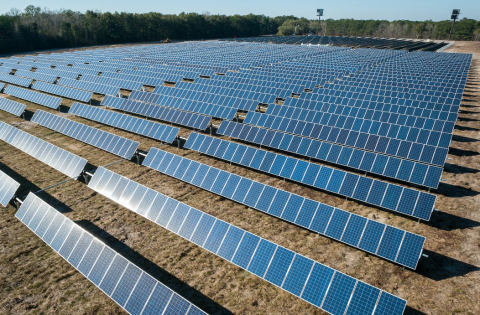Introduction
Scaling up of solar and wind power is essential for Aotearoa New Zealand to become carbon neutral by 2050. While wind and solar currently account for less than 8% of New Zealand’s total energy generation, by 2050 that number is projected to rise to over 50%.
However, wind and solar power can be highly variable. Having confidence in the predictability of supply is therefore critical to the uptake of intermittent generation sources of wind and solar power.
NIWA is developing an operational nowcasting system, called NIWA Next, which will give decision makers access to accurate predictions and help integrate wind and solar generation into the grid.

NIWA Next – an operational nowcasting system for wind and solar generation in New Zealand
A nowcast is a short-range forecast that looks at the current conditions across NIWA’s vast observational network, and then adjusts the forecasts 'on the fly'. The Artificial Intelligence (AI)-enhanced nowcasting forecasting service will cover the whole of New Zealand including Wharekauri/Chatham Islands.
NIWA Next blends NIWA’s weather modelling with modern data science techniques. The researchers will explore applying the AI-enhanced nowcasting to NIWA’s 18-member ensemble model (NZENS) and other modelling systems as well as real-time satellite imagery. This means users will be able to see the possible spread of outcomes.
NIWA Next is high-resolution and rapidly updating, generating predictions of solar and wind power at 10-minute increments out to 12 hours, and updating every 30 minutes. Nowcasts from NIWA Next will be available on a grid for solar and for selected wind sites.
Output parameters will include:

- downward short-wave radiation flux at surface
- solar power generation for one industry “standard” solar panel
- solar power generation for one industry axis-tracking solar panel
- surface wind speed and direction
- wind power generation.
The project will include forecast verification and involves setting up and identifying appropriate access methods for stakeholders and public.
The focus for wind generation will be on established and planned wind farms, whereas solar forecasting will consider both rooftop installations and solar farms. The latter increasingly use solar tracking to achieve more uniform generation over the day.
Leveraging existing NIWA capability
The NIWA Next nowcasting system will be grounded in NIWA’s Numerical Weather Prediction model and our forecasting team’s work on high resolution and ensemble modelling. It also draws on the data science capabilities at NIWA and the supercomputing facilities which allow researchers to train AI models on hundreds of terabytes of data and run the high-resolution weather models.
NIWA Next’s solar forecasts will also draw from NIWA’s work developing a clear-sky, topographically-corrected irradiance model, called Solarview.


